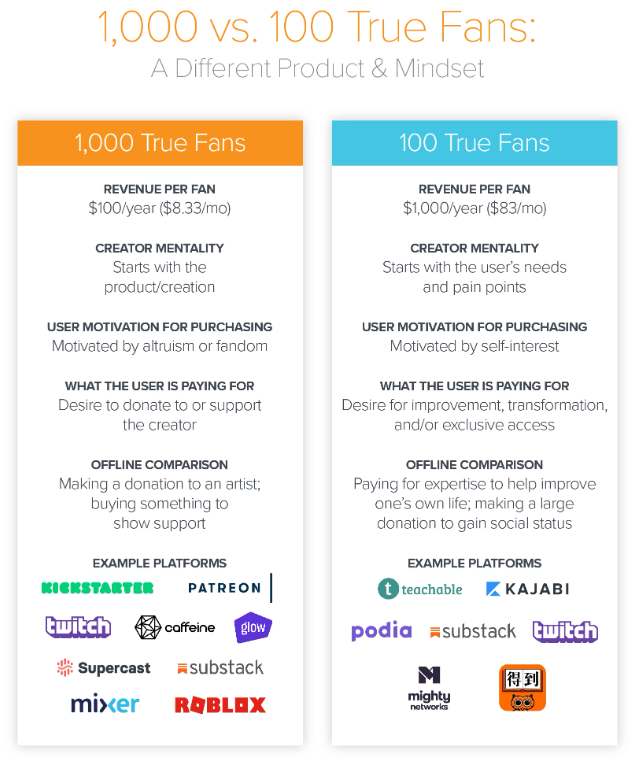I’m working on an idea in the creator economy space and have thought a lot about who exactly I’m building for and realized that there are many different types of “content creators” and “influencers” with nuanced differences between them.
And although many share the same pain points, influencers and content creators who have amassed large digital followings tend to differ in how they build community, produce content, and make money.
On one hand, you have “influencers:”
some were already famous before creating an online identity, while others are digitally native and found fame only after creating digital content online
they tend to engage with their audiences through creating more personal content
they connect with their audience through authenticity and relatability, showcasing their talents, passions, and a peek into their personal lives
their main sources of income are brand partnerships, ads, affiliate marketing, and some launch digital or physical products/services
they tend to have true “fans” — people who follow them because of who they are, typically supportive of or consuming anything they produce
if paying directly, fans are typically paying to support the influencer
On the other hand, you have what I’m calling “utilitarian content creators:”
utilitarian content creators are digitally native, finding fame after creating digital content online
utilitarian content creators create content that entertains or educates their audiences, leaning into their own talents or a specific niche
most of their income comes from creating their own digital products or services
if paying directly, fans tend to pay more so for products or services that provide them benefits
In 2008, Kevin Kelly wrote an essay called “1,000 True Fans,” which Li Jin used as a basis to build upon to write “100 True Fans” two years ago. Below is a clip from the latter, which offers a great breakdown of the two approaches to monetizing community. In keeping with how I define them above, influencers fit into the 1,000 true fans model whereas content creators make more sense with the 100 true fans approach. for xyz, it seems I would either need a few large influencers, a greater number of mid-sized creators, or some combination of both.

